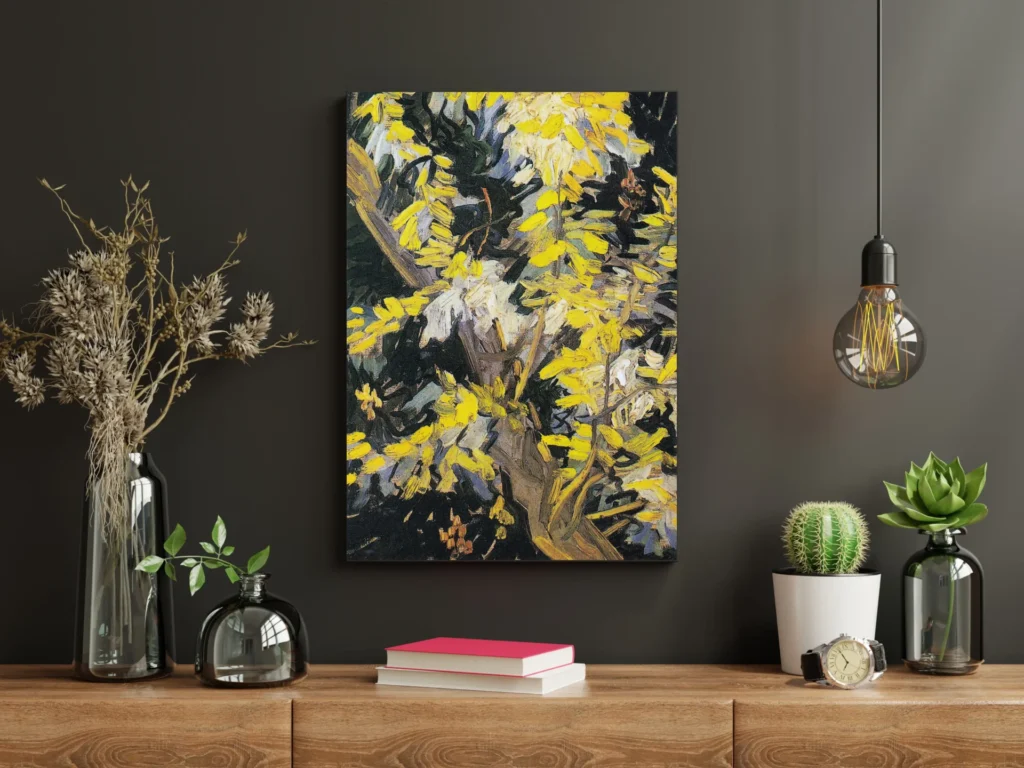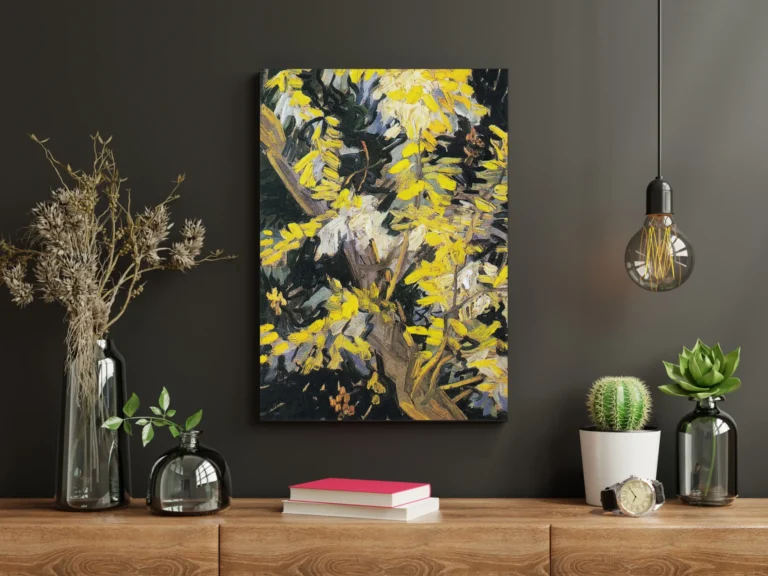Blossoming Acacia Branches (1890)
Created in June 1890, Blossoming Acacia Branches is an intriguing oil on canvas painting by Vincent van Gogh. Spanning 32.5 x 24.0 cm, this artwork highlights Van Gogh's mastery of color and form. The painting depicts a branch with blossoms, sparking discussions about its authenticity and the practicality of the depicted flowers blooming in June in northern France. It is thought that the work could feature black locust blossoms or might even reflect Van Gogh's memories of flowers, showcasing his unique artistic process.
Year 1890
About the Artwork
The story behind Blossoming Acacia Branches is steeped in the final days of Vincent van Gogh's life. Created in 1890, shortly before his death, it reflects the artist's intense productivity during a challenging period in Auvers-sur-Oise. Though the painting is thought to depict acacia flowers, the uncertainty surrounding both its authenticity and the specific subject matter adds layers of intrigue. Critics and scholars have speculated that Van Gogh may have relied on memory for his portrayal, given the seasonal discrepancies of the blossoms. This work not only continues to engage viewers with its vibrant palette and emotive brush strokes but also prompts reflection on Van Gogh's artistic process and the complexities surrounding his later works.
Did You Know
Liked what you see? Add it to your collection.
Enjoyed reading? Share it.
... continued
Dimensions and Medium
The painting is an oil on canvas work, measuring 32.5 x 24.0 cm.
Location
The painting is housed at the National Museum in Stockholm.
Authenticity and Subject Matter
There is some debate about the authenticity of this painting. Some question whether Van Gogh could have produced it during his brief but prolific period in Auvers-sur-Oise, given the high number of paintings he created in just two months. Additionally, there is discussion about the subject matter, as acacias are typically not in bloom in northern France by June. However, it is suggested that the flowers might be black locust or "false acacia" (Robinia pseudoacacia), which could still be in bloom during that time. Another possibility is that Van Gogh painted the flowers from memory, a practice he occasionally employed despite his preference for plein air painting.
Cataloging
The painting is cataloged as F 821 and JH 2015 in the Van Gogh catalogues.










